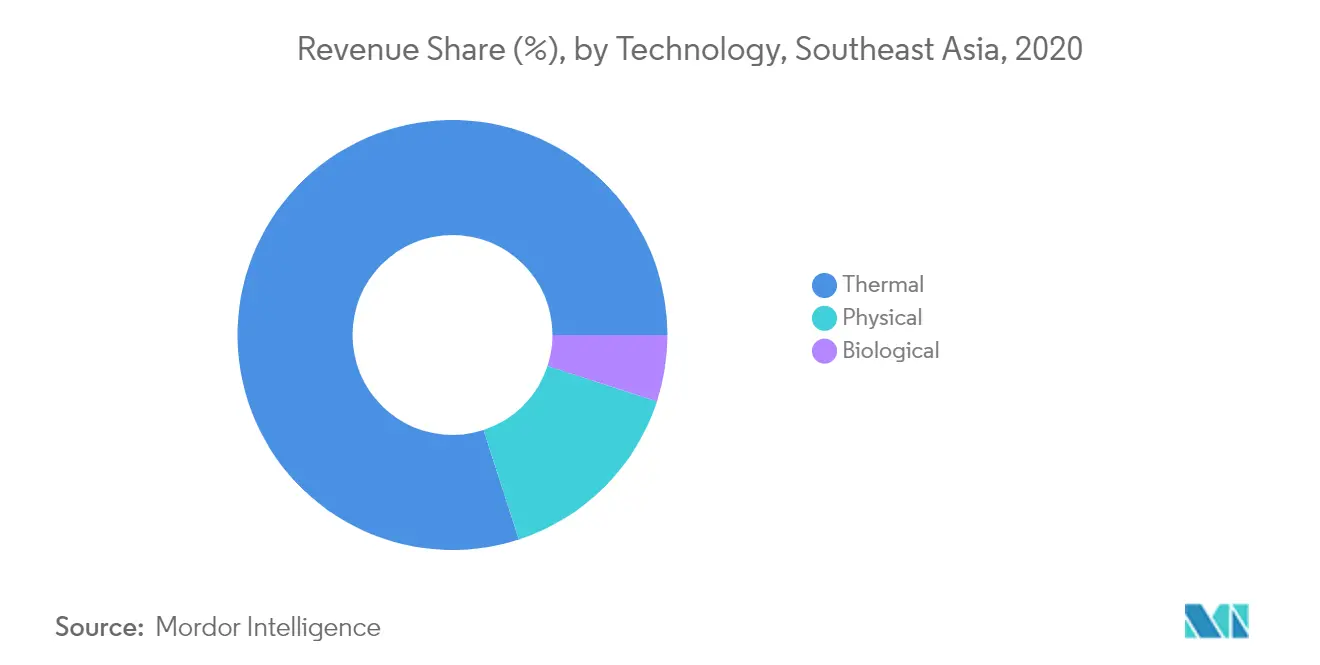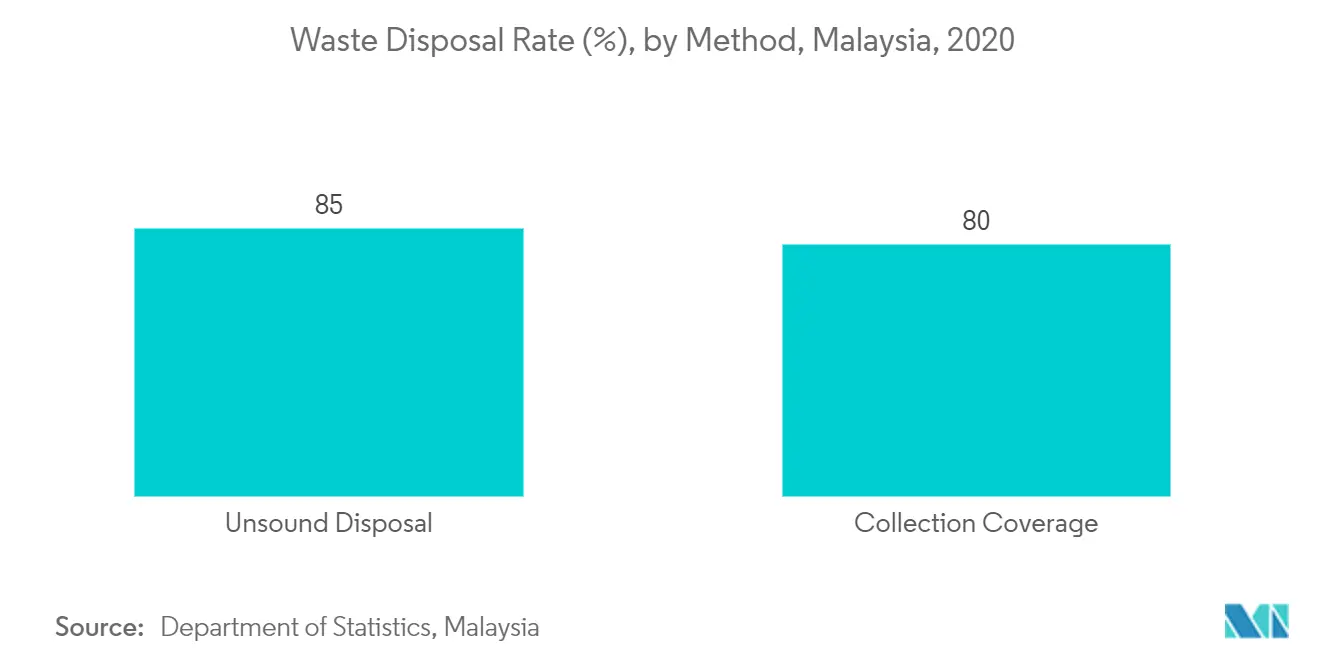Market Trends of Southeast Asia Waste-to-Energy Industry
This section covers the major market trends shaping the Southeast Asia Waste-to-Energy Market according to our research experts:
Growing Demand for Thermal-Based Waste-to-Energy Conversion
• Thermal technology is expected to account for the highest market share in the waste-to-energy market during the forecast period, owing to the increasing development of waste incineration facilities in the Southeast Asia region.
• It is estimated that plants, which utilize cogeneration of thermal power (heating and cooling), together with electricity generation, can reach optimum efficiencies of 80%.
• In the present scenario, incineration is the most well-known waste-to-energy technology for municipal solid waste (MSW) processing. However, waste-to-energy technologies, particularly incineration, produce pollution and carry potential health safety risks.
• As incineration involves the thermal combustion of waste products producing potentially harmful greenhouse gas emissions, the technology has faced opposition in developed countries, such as the European Union, due to environmental concerns. However, due to considerably lenient environmental regulations in developing countries, the technology is widely utilized in countries in the Asia-Pacific region, such as Thailand and Indonesia.
• The thermal-based waste-to-energy conversion is expected to lead the market, particularly in the growing economies of Southeast-Asia, where the rising urban population is expected to be the key contributing factor for increasing municipal solid waste (MSW).

Malaysia Expected to Witness Significant Growth
• For the development of waste-to-energy infrastructure in the country, the Malaysian Ministry of Housing and Local Government has collaborated with private players in the market.
• In 2020, Malaysia has two waste disposal methods i.e., unsound disposal (85%), and collection coverage (80%)
• The Housing and Local Government Ministry (KPKT) plans to set up six waste-to-energy (WTE) plants by 2025, with various technologies to be evaluated.
• In February 2021, Malaysia's Housing and Local Government Ministry launched a tender for a waste-to-energy (WTE) project in Sungai Udang, Malacca, under a public-private partnership (PPP) model. Similarly, in September 2020, KPKT announced the request for a proposal for a waste-to-energy project in Bukit Payong, Johor, also on a public-private partnership basis.
• In April 2021, Cypark Resources Bhd signed an agreement with the Melaka State government to join in a Waste-To-Energy (WTE) public-private partnership at Sungai Udang, Melaka.
• Additionally, in 2020, the Malaysian Investment Development Authority (MIDA) bridged a collaboration between BiON Group of Companies and SIRIM Tech Ventures Sdn Bhd (STV). Through this collaboration, MIDA and collaborating companies aim to develop potentials in the commercialization of ‘Waste to Energy’ (WTE) activities in ensuring sustainable waste management in the country.
• Therefore, owing to the above points, Malaysia is expected to witness significant growth during the forecast period.

